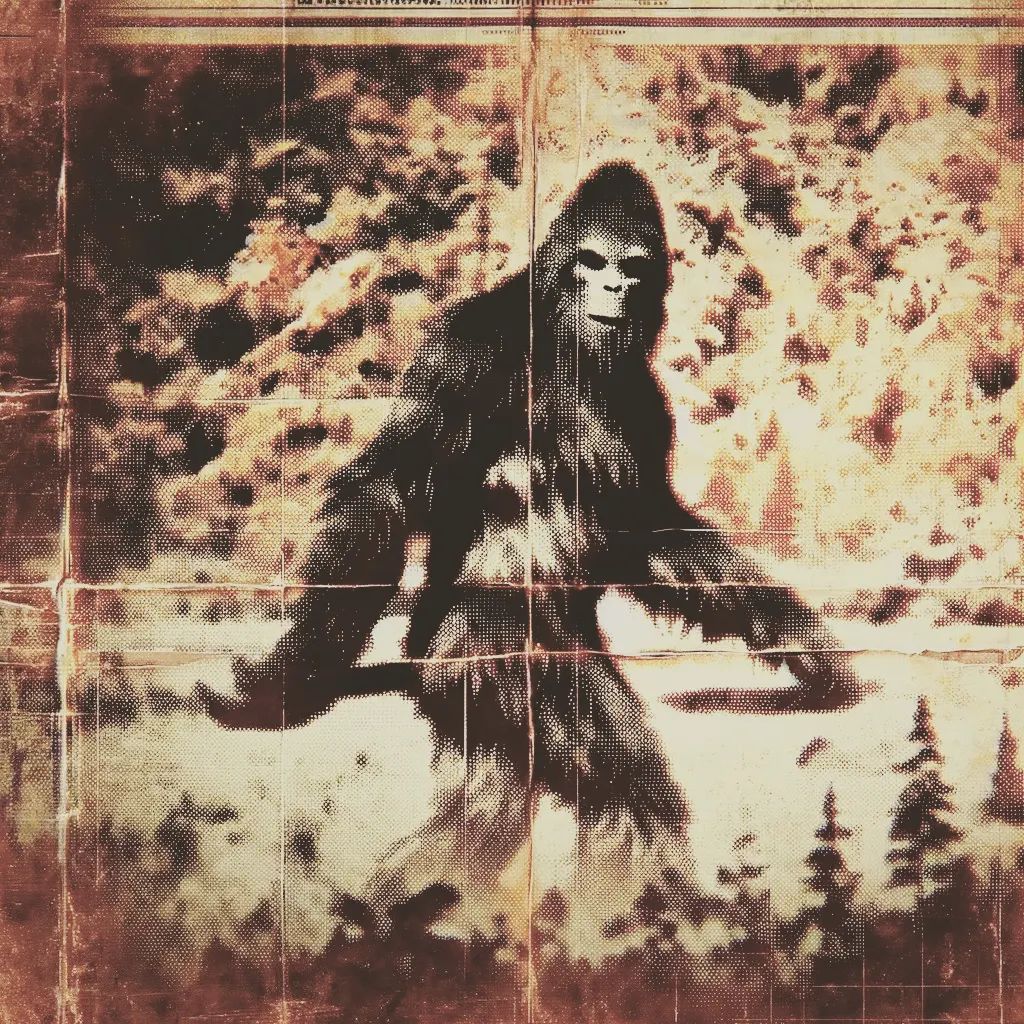
Bigfoot – Unraveling the Mystery of America’s Elusive Giant
Introduction:
Bigfoot, also known as Sasquatch, stands tall in the annals of American folklore—a mysterious creature said to roam the vast wilderness areas of North America. Descriptions of Bigfoot depict a large, bipedal ape-like being, covered in dark fur, with an imposing stature and elusive nature. This blog post seeks to explore the legend of Bigfoot, examining the evidence, cultural impact, and the ongoing quest to prove the existence of this enigmatic being.
Background:
The Bigfoot legend has roots in various indigenous cultures across North America, with numerous tribes sharing stories of a wild, hairy man who lives in the forest. The modern Bigfoot phenomenon gained traction in the mid-20th century, following a surge of sightings and the infamous 1967 Patterson-Gimlin film, which purported to show Bigfoot walking along a riverbank in Northern California.
Main Analysis:
Key Aspects:
Bigfoot is often described as standing between 6 to 9 feet tall, with a powerful build and footprints measuring up to 24 inches in length. Sightings report a creature with a strong, unpleasant odor, capable of moving silently despite its size. Researchers and enthusiasts have compiled evidence ranging from eyewitness accounts to physical indicators like footprints, hair samples, and, less frequently, photographic and video evidence.
Theories and Interpretations:
Theories about Bigfoot’s nature vary widely, from undiscovered species of great ape, a relic population of Gigantopithecus (a prehistoric ape), to more fringe theories involving paranormal or extraterrestrial origins. Skeptics often attribute sightings to misidentification of known wildlife, hoaxes, or psychological phenomena.
Cultural and Societal Impact:
Bigfoot has permeated American culture, becoming an icon of the mysterious and unexplored wilderness that still exists within the country’s borders. The creature has been featured in films, television shows, and literature, symbolizing humanity’s fascination with the unknown and the primal fear of what lurks in the dark, uncharted regions of the world.
Scientific and Skeptical Perspective:
The scientific community largely remains skeptical of Bigfoot’s existence, citing a lack of conclusive evidence and the challenges associated with a large primate species remaining undetected in today’s age of extensive wilderness exploration and technology. However, the search for Bigfoot has sparked interest in cryptozoology and the importance of preserving wilderness areas.
Conclusion:
Bigfoot continues to captivate the imagination of believers and skeptics alike, representing the enduring human attraction to mystery and the possibility of undiscovered wonders in the natural world. Whether fact or folklore, the legend of Bigfoot encourages a deeper appreciation for the wild spaces of North America and the mysteries they may still hold.
References:
Byrne, Peter. The Search for Bigfoot: Monster, Myth or Man? Washington, D.C.: Acropolis Books Ltd, 1975.
Daegling, David J. *Bigfoot Exposed: An Anthropologist Examines America’s End
Leave a comment